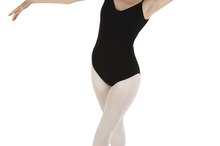Alternatives to Neoprene
Neoprene is a type of synthetic rubber used for a variety of functions, most notably for insulating suits used for water sports. The insulating and protective qualities of the foamed neoprene mean it is ideal for making wetsuits and covers for electronic devices. Neoprene, however, can cause allergic reactions in some people, and the manufacture and composition of neoprene make it less environmentally friendly. There are a few alternatives to neoprene that provide the same benefits.
Neogreen
Neogreene is a recent development by a company called GreenSmart. It has a similar make-up to neoprene with a more environmentally-friendly production technique. It has a Shore A value (a hardness test method) similar to SBR, rubber, and neoprene foam. It is currently used to make a number of different products, which have been traditionally made from neoprene, including laptop sleeves, bottle holders, bags and wine coolers. It has yet to be used in the manufacture of water sports equipment.
- Neogreene is a recent development by a company called GreenSmart.
- It has a Shore A value (a hardness test method) similar to SBR, rubber, and neoprene foam.
Lycra
Good Material for a Dance Leotard
Learn More
For those looking for protection from the water when participating in water sports, full-length lycra suits can protect against the marine environment. Lycra is lighter than neoprene and easy to shape. One big drawback is that lycra lacks the insulating qualities of neoprene, meaning that it is not practical to make exposure suits from this material. The thickness of lycra also means that it cannot fulfill the protective role that neoprene products have. It absorbs water easily and a thick lycra layer would become very heavy when saturated with water.
- For those looking for protection from the water when participating in water sports, full-length lycra suits can protect against the marine environment.
- One big drawback is that lycra lacks the insulating qualities of neoprene, meaning that it is not practical to make exposure suits from this material.
Thermocline
For those who need exposure protection, but find themselves allergic to neoprene, then Thermocline might be the answer. With good insulating qualities but reduced thickness, thermocline is a suitable substitute for neoprene in some conditions. It is neutrally buoyant in contrast to the positive buoyancy of neoprene which is affected by pressure at depth. It is breathable as well, which means that it can be worn out of water but in thinner thicknesses than neoprene, so the wearer is not as susceptible to overheating. Because it is thinner the neoprene foam, it does not offer the same protective qualities that neoprene foam does for electronic items and water bottles. It is currently used in water sports suits.
- For those who need exposure protection, but find themselves allergic to neoprene, then Thermocline might be the answer.
- With good insulating qualities but reduced thickness, thermocline is a suitable substitute for neoprene in some conditions.
Silicone Rubber
Grip Tape Alternatives
Learn More
For products where insulation and movement are not an issue, silicone rubber can be a useful alternative. In these cases neoprene is used for protection, this is something that silicone rubber can provide very well, for example in mobile phone or iPod holders. In contrast to neoprene, silicone rubber is much more water resistant, and can be made thinner for the same tasks. It is however, fairly inflexible and nonporous with few insulation properties. This means that adapting it for anything other than protection of electronic items can be fairly limited.
- For products where insulation and movement are not an issue, silicone rubber can be a useful alternative.
Related Articles
References
Writer Bio
Mark Slingo has been a professional writer since 2008. His work has appeared in Forward, ScubaGlobe, Scuba Jedi, "Pattaya Mail" and other publications. Slingo has a Bachelor of Arts in politics from the University of Newcastle and a diploma in journalism from the British College of Journalism.









